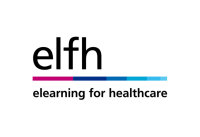Anaesthesia | Paediatrics | Postoperative Fluid Management and Antiemetic Therapy



Postoperative Fluid Management and Antiemetic Therapy
Session Overview
Description
This session describes postoperative fluid management in children and the clinical response to specific conditions which may arise.
Learning Objectives
By the end of this session you will be able to:
- Formulate a postoperative fluid management plan for any child following surgery
- Select the appropriate fluids to write-up for maintenance regimens postoperatively
- Recognize the risk factors for postoperative vomiting (POV)
- Describe the methods available to alleviate POV
- State the classes and mechanisms of action of the common antiemetics given to paediatric patients
Maintenance fluid given in the postoperative period completes the whole perioperative intravenous (IV) fluid management plan.
Pre-operative fluid deficits should have been replaced and the child now requires infusion of maintenance fluids plus additional fluids to cover any ongoing additional losses.
The child is repeatedly reassessed and fluid intake adjusted until normal fluid and electrolyte homeostasis has been restored. When oral fluid intake approximates hourly fluid maintenance rates, IV fluids may be stopped.
In paediatric anaesthesia, POV is the term used rather than postoperative nausea and vomiting (PONV), as nausea is difficult to measure in children.
POV is one of the most common complications following general anaesthesia in children. Besides being unpleasant and distressing for paediatric patients and their carers, it is also the most common reason for an unplanned overnight admission to hospital.
- Anaesthesia Fundamentals | Physiology | Visceral P...
- Posted By eIntegrity Healthcare e-Learning
- Posted Date: 2024-11-12
- Location:Online
- This session describes the clinical features of visceral pain and neuropathic pain, and contrasts these with somatic pain. The neurological pathway is discussed and the principle of central sensitization.
- Anaesthesia Fundamentals | Physiology | Pain - Per...
- Posted By eIntegrity Healthcare e-Learning
- Posted Date: 2024-11-12
- Location:Online
- This session works through the peripheral and central mechanisms of pain.
- Anaesthesia Fundamentals | Physiology | Neurologic...
- Posted By eIntegrity Healthcare e-Learning
- Posted Date: 2024-11-12
- Location:Online
- The session covers the organization of the spinal cord for motor functions, the types of motor neurones, the structure and function of muscle spindles and Golgi tendon organs, and the muscle stretch reflex, flexor and crossed extensor reflexes.
- Anaesthesia Fundamentals | Physiology | Autonomic ...
- Posted By eIntegrity Healthcare e-Learning
- Posted Date: 2024-11-12
- Location:Online
- This session summarises the structure and function of the autonomic nervous system.
- Anaesthesia Fundamentals | Physiology | The Brain
- Posted By eIntegrity Healthcare e-Learning
- Posted Date: 2024-11-12
- Location:Online
- Â This session covers the functional physiological divisions of the brain, the regulation of blood flow and physiology of cerebrospinal fluid.

